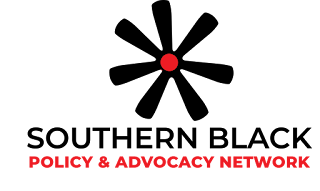By: Sarah Hooper, intern, ADAP Advocacy Association, and senior at East Carolina University
Earlier this year, it was revealed by the National Institutes of Health (NIH) that it would pump $14.6 million into a HIV research program headed up by the University of Southern California (USC) and the Fred Hutchinson Cancer Research Center. The aim of the research program is to eliminate the need for HIV patients to take daily medication, and to hopefully achieve an overall cure.
 |
| Photo Source: RT News App |
According to End Points News, the therapy would allow a patient’s own stem cells to fight the HIV infection and allow them to make new immune cells when the infection is fought. (End Point News)
“The approach was inspired by three patients who appear to have been cured of the virus — all of whom received blood stem cell transplants from donors who carried a mutation in the CCR5 gene. One of them, dubbed the “Berlin patient,” had been off antiretroviral drugs from 2007,” End Point News said.
In 2006, Timothy Ray Brown (also known as the Berlin patient) was diagnosed with myeloid leukemia. In 2007, Brown received two bone marrow transplants, and halted his HIV medications in the process (ScienceMag). Since the bone marrow transplant, researchers have only found traces of HIV, none of which is able to replicate in Brown’s system- effectively curing him of HIV.
NIH’s new research program is using similar technology in its search to find a cure for HIV. By using stem cells to fight the disease, the need for medication is much lesser, as one’s own body can fight HIV. However, the process Brown went through to fully cure himself of HIV is intense.
“The first is the process of conditioning, in which doctors destroyed Brown’s own immune system with chemotherapy and whole-body irradiation to prepare him for his bone marrow transplant. His oncologist, Gero Hütter, who was then with the Free University of Berlin, also took an extra step that he thought might not only cure the leukemia but also help rid Brown’s body of HIV. He found a bone marrow donor who had a rare mutation in a gene that cripples a key receptor on white blood cells the virus uses to establish an infection. The third possibility is his new immune system attacked remnants of his old one that held HIV-infected cells, a process known as graft versus host disease,” ScienceMag said.
In September 2020, Brown passed away from his cancer, and the HIV community mourned his loss.
 |
| Photo Source: HIV Plus Magazine |
The search for a cure to HIV has been ongoing since the virus was discovered. Treatment with antiretrovirals has been a massive step away from a death sentence and towards a normal life for HIV patients. The issue with the HIV virus is it can be hidden in cells while being suppressed by current HIV treatment. The only HIV patients who have been successfully cured of the virus were also undergoing intense treatments for a separate cancer diagnosis, according to ViiV Healthcare.
These patients underwent a bone marrow transplant in which an HIV free bone marrow was placed in their body, which is a high-risk surgery as is.
“While their treatments were extremely high risk and not amenable to wide scale implementation, these instances of cure bring hope of what is possible in our efforts to end the HIV epidemic,” ViiV Healthcare said.
The NIH initiative to eliminate the need for daily medication is an incredible effort made available by years of previous research and effective treatment. If successful, this effort could change the lives of millions of HIV patients in the United States and around the world.
References:
- A cure for HIV the end goal. (n.d.). Retrieved September 17, 2020, from https://viivhealthcare.com/en-gb/our-stories/innovation-hiv-science/towards-a-cure-exploring-cure-and-remission-in-hiv/
- DeFeudis, N. (2020, September 03). Researchers teamed up to develop a 'three in one' HIV treatment - and the NIH is throwing in $14.6M. Retrieved September 16, 2020, from https://endpts.com/researchers-teamed-up-to-develop-a-three-in-one-hiv-treatment-and-the-nih-is-throwing-in-14-6m/
- Jon Cohen Sep. 25, 2., Meredith Wadman Sep. 16, 2., Adrian Cho Sep. 15, 2., Ian Morse Sep. 14, 2., Eli Cahan Sep. 14, 2., Scott Waldman, E., . . . Rebekah Tuchscherer Aug. 26, 2. (2017, December 10). How did the 'Berlin patient' rid himself of HIV? Retrieved September 16, 2020, from https://www.sciencemag.org/news/2014/09/how-did-berlin-patient-rid-himself-hiv






